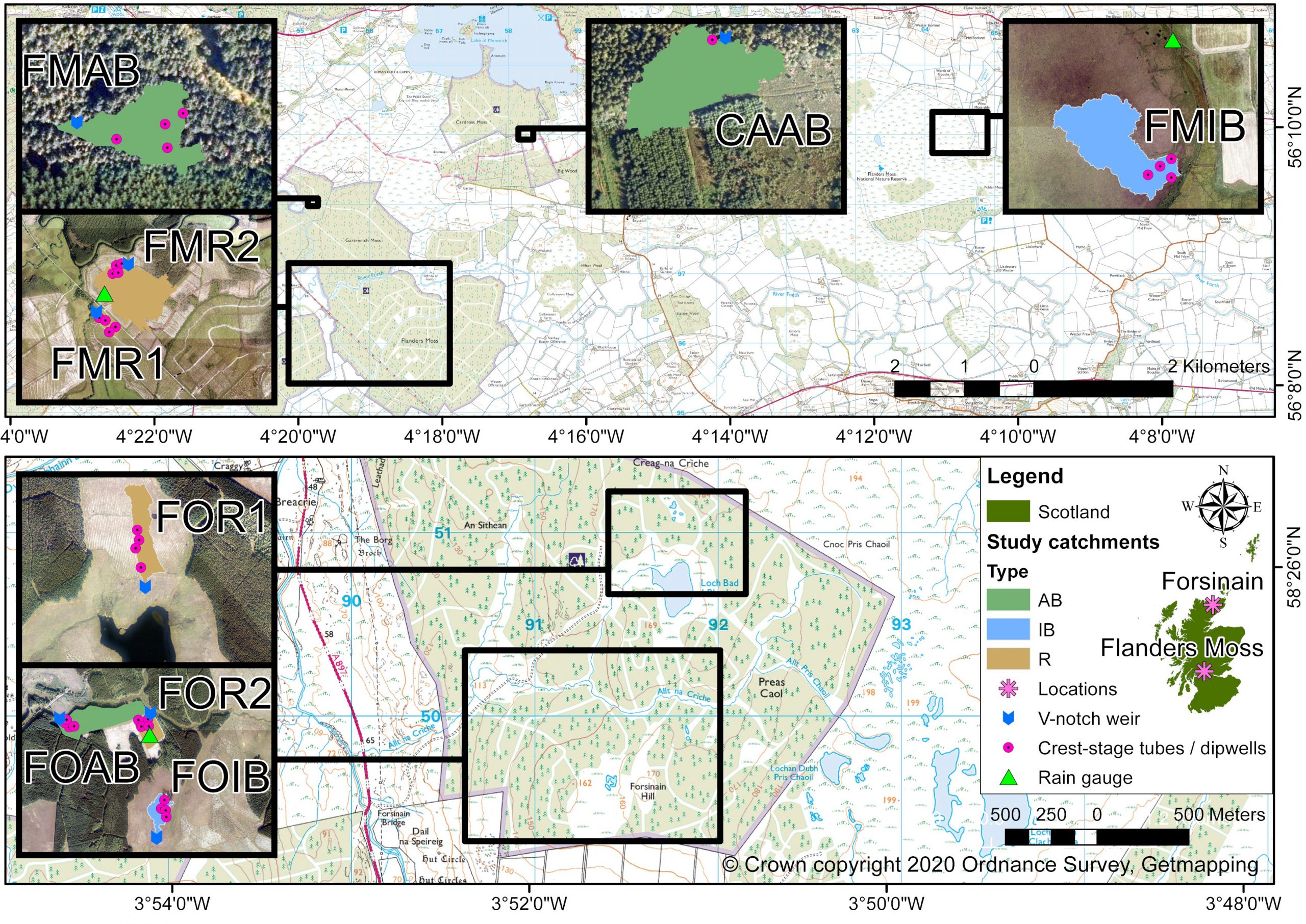The carbon sequestration potential of peatlands has led to increasing interest in the restoration of bogs previously subjected to plantation forestry. However, little information exists about the effects on hydrological processes of what has become known as forest-to-bog restoration.
The hydrological functioning of three afforested, two intact and four forest-to-bog restoration sites was compared at a raised bog and blanket bog location. For the raised bog location, the annual runoff/rainfall coefficient was 59.7% for the intact site, 41.0% for the afforested site and 53.1% for the oldest restoration site (9 years post-felling). At the blanket bog location, the coefficient was 80.6% for the intact site, 63.0% for the afforested site and 71.6% for the oldest restoration site (17 years post-felling).
Compared with intact bog, median peak storm discharge was significantly greater in the restoration sites for the raised bog location but not for the blanket bog location. Water-table peak lag times were greatest, and water-table depths deepest in the afforested sites and the most recent raised bog restoration site and least in the oldest blanket bog restoration site. The estimated contribution of overland flow in the afforested sites was 2.9% for the raised bog and 11.9% for the blanket bog, increasing to 8.7% and 32.2% at the oldest restoration sites for the raised bog and blanket bog, respectively.
Overall, hydrological functioning of the raised bog and blanket bog restoration sites was different from the intact sites but was most similar to intact bog in the oldest restoration sites.

